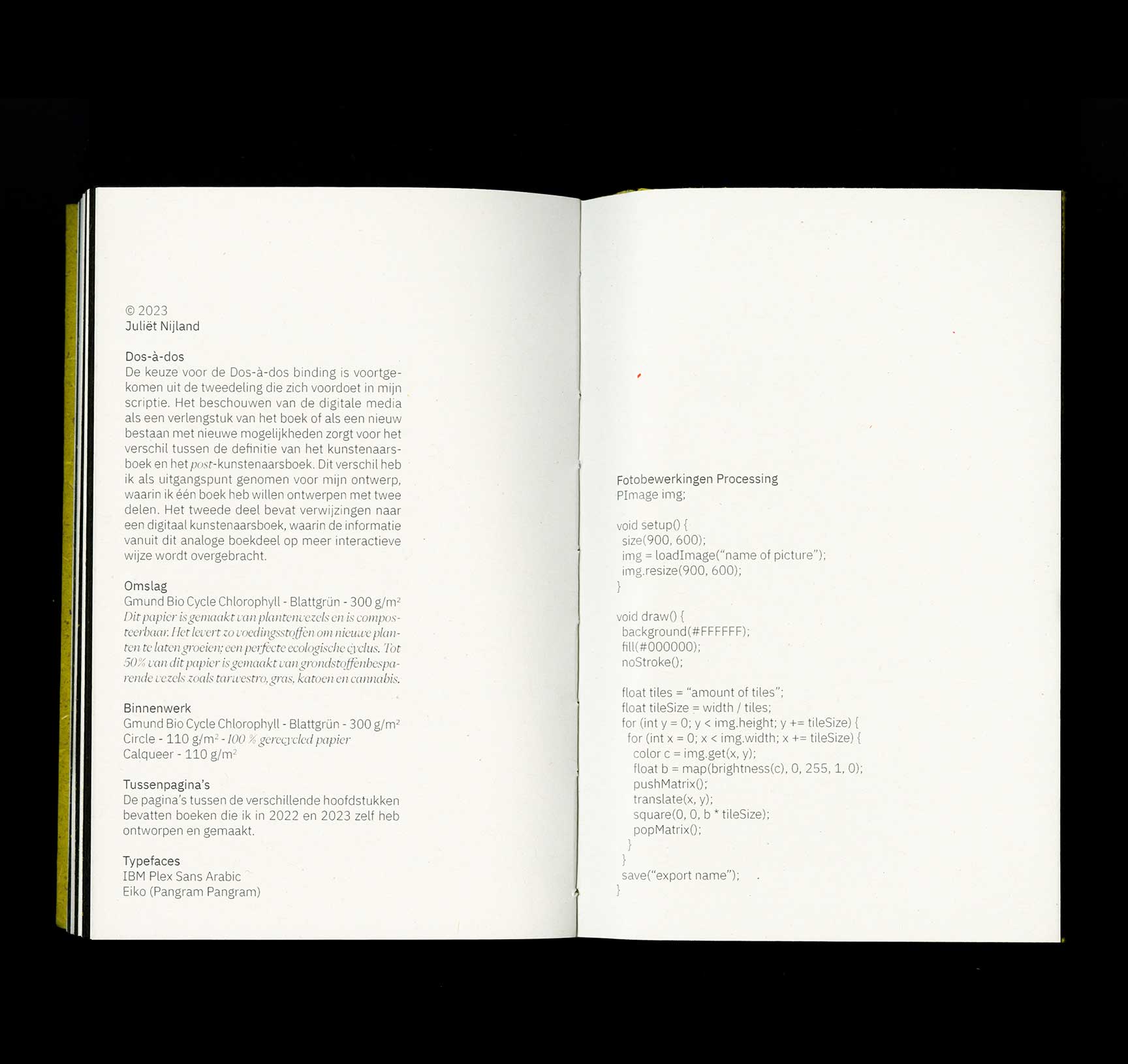During the research for my thesis, I came across the book ‘How to
Speak Machine’ from technologist and designer John Maeda, where he
said the previous words. For me, this should describe the attitude of
the typical book designer towards digitalization. We should not be
scared of redefining the artists’ book as something non-physical,
because of the new possibilities that lie beyond the old definition of
this medium.
The negativity with which many book designers and book artists
approach the digital environment, stems from the great love for the
traditional medium and craft. The changing position of the book asks
me to adjust my own positioning within the field and look at the
future with an open mind. As a young designer, my interest lies in the
possibilities of acquiring a new experience of the artist's book
within digital media and in the question whether it can be more
extensive than our traditional way of thinking about it. ‘The Digital
Extension and Existence’ explores the possibilities of a ‘new’ digital
artist’s book, taking inspiration from all the beautiful possibilities
of the actual artist’s book.
Juliët Nijland
Cover: Gmund Bio Cycle Chlorophyll Leaf-Green paper - 300 g/m2. This ecological paper is made from up to 50% wheat straw, grass, cotton and cannabis – all of which are resource-saving annual plants. The addition of natural chlorophyll gives this grass-based paper a vibrant green color. The paper is made from plants and is compostable, so it can decompose to provide nutrients for new plants.
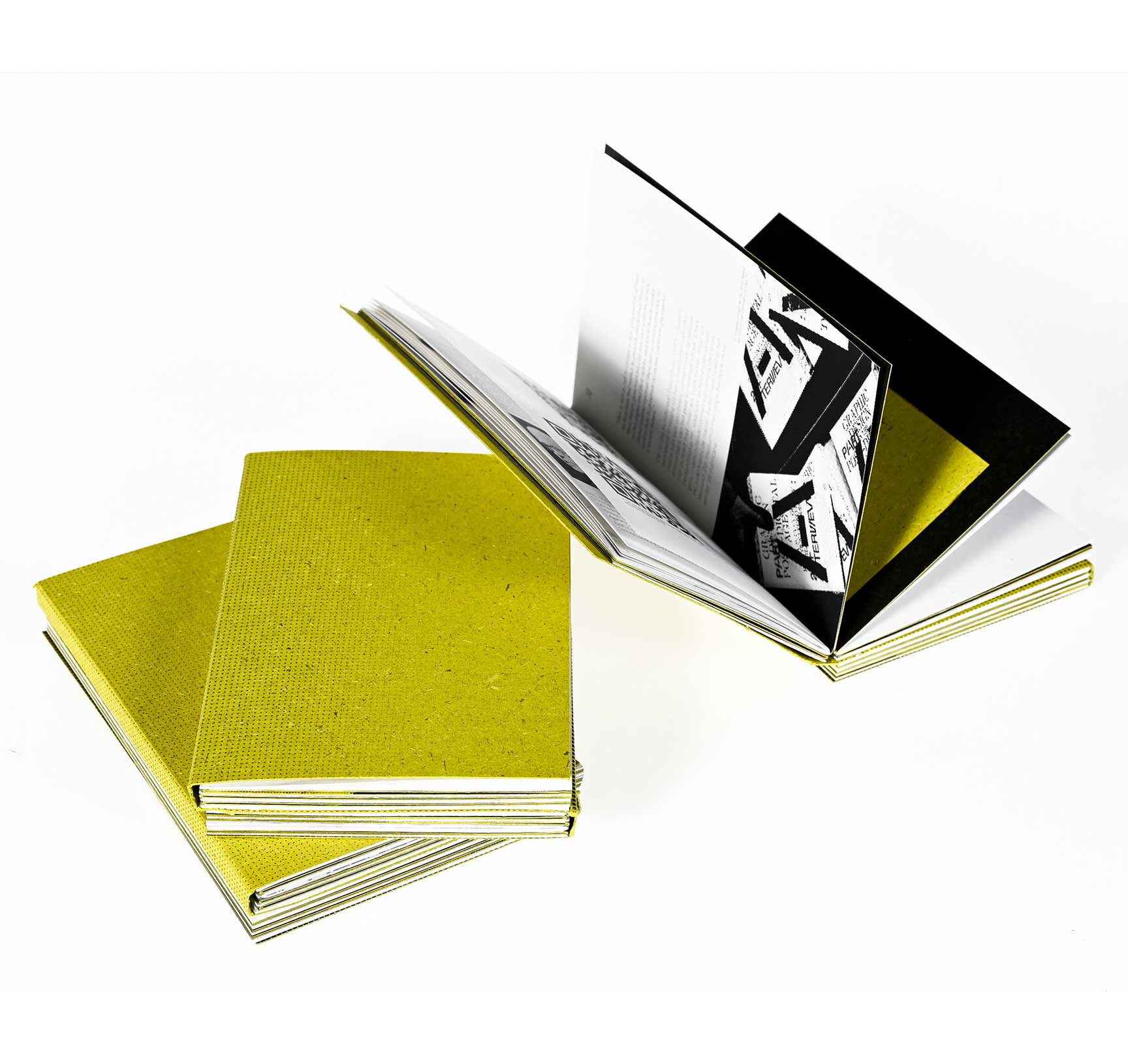
Juliët Nijland
The choice for the dos-à-dos binding arose from the division that occurs in my thesis. Considering the digital media as an extension of the book or as a new existence with new possibilities creates the difference between the definition of the artist's book and the post-artist's book. I took this difference as a starting point for my design, in which I wanted to design one book with two parts.
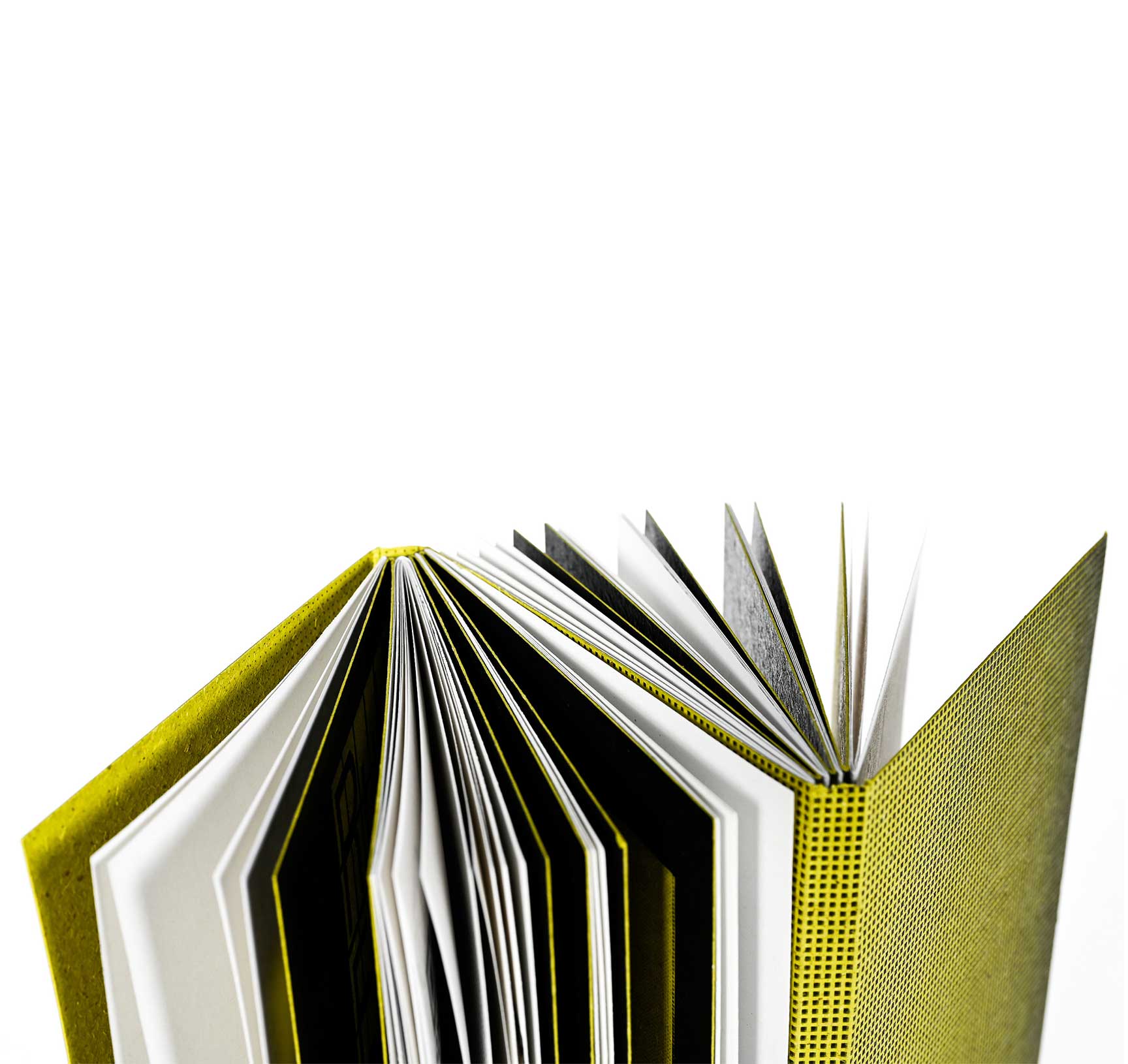
Juliët Nijland
I made the connection between the different chapters with a French Link Stitch, a binding that creates a kind of crocheted pattern.

Juliët Nijland
Inside: Gmund Bio Cycle Chlorophyll Leaf-Green paper - 300 g/m2, Calqueer paper - 110 g/m2 and Circle paper - 110 g/m2. Circle is 100% recycled.

Juliët Nijland
The typefaces that are used are IBM Plex Sans Arabic and Eiko (by Pangram Pangram). The fonts have been chosen for their cornered qualities.
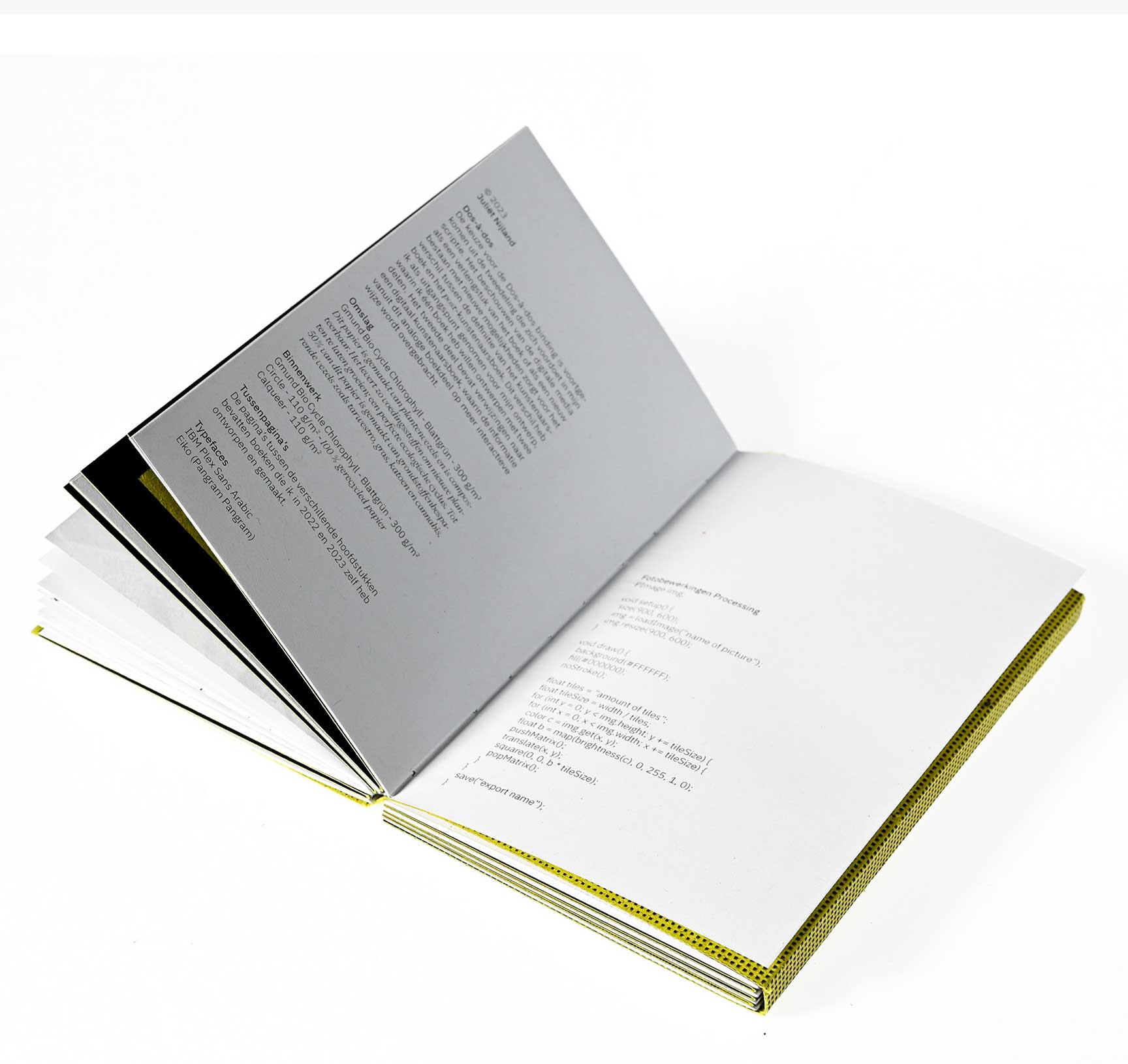
Juliët Nijland
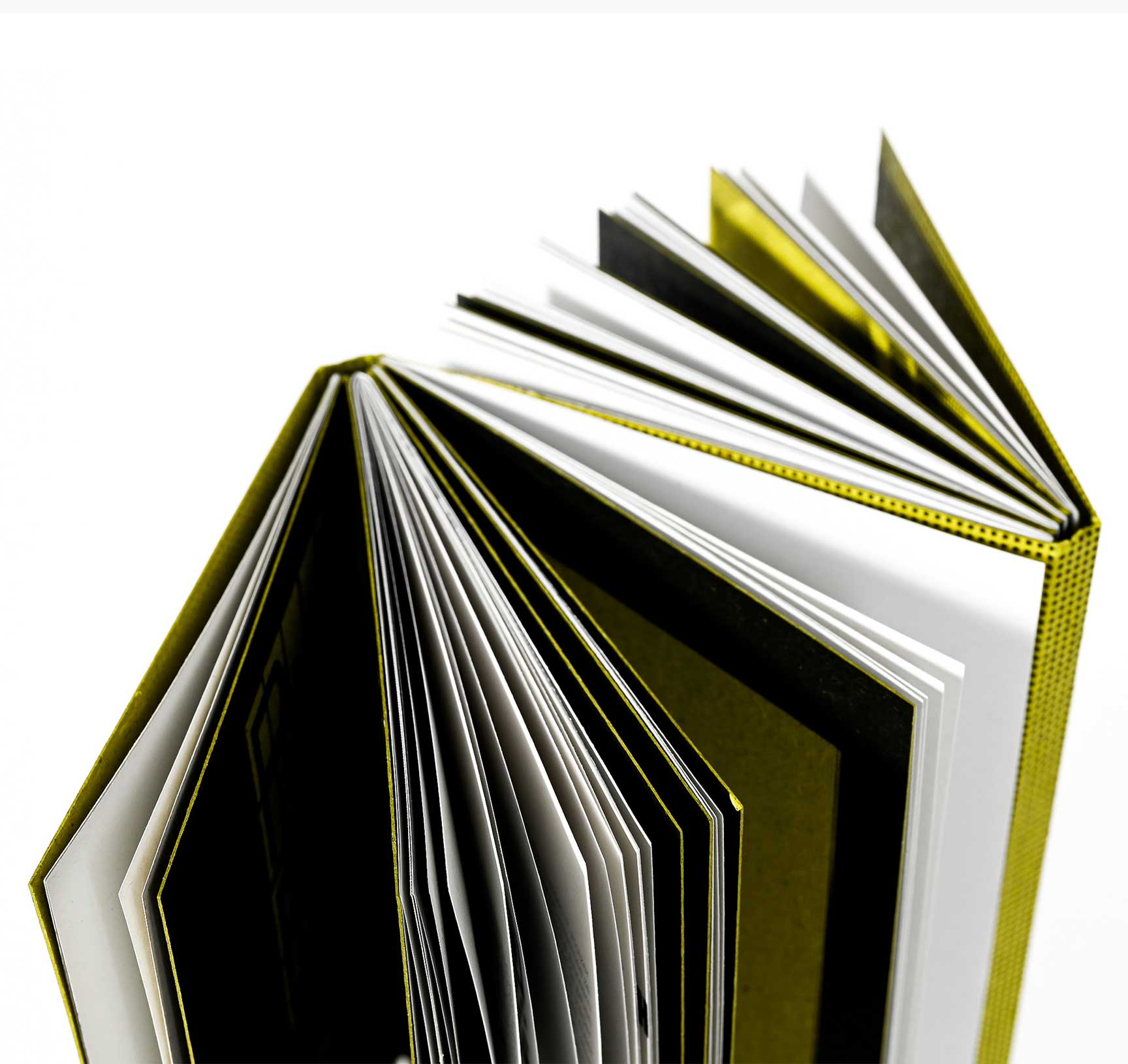
Juliët Nijland
The front of the book is a rasterized overflow that colours from dark to light, making the paper stand out more clearly at the start of the second part.
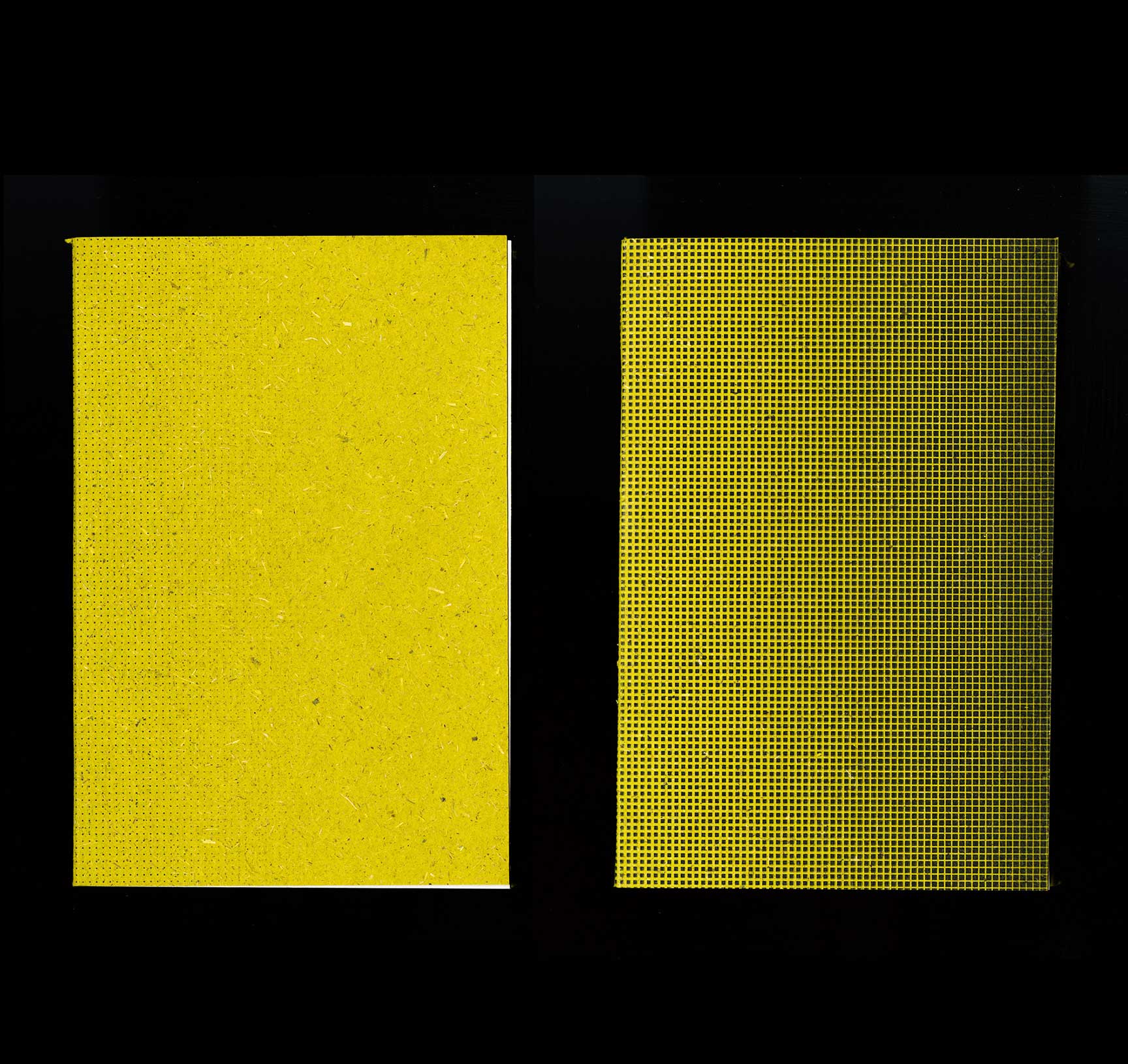
Juliët Nijland
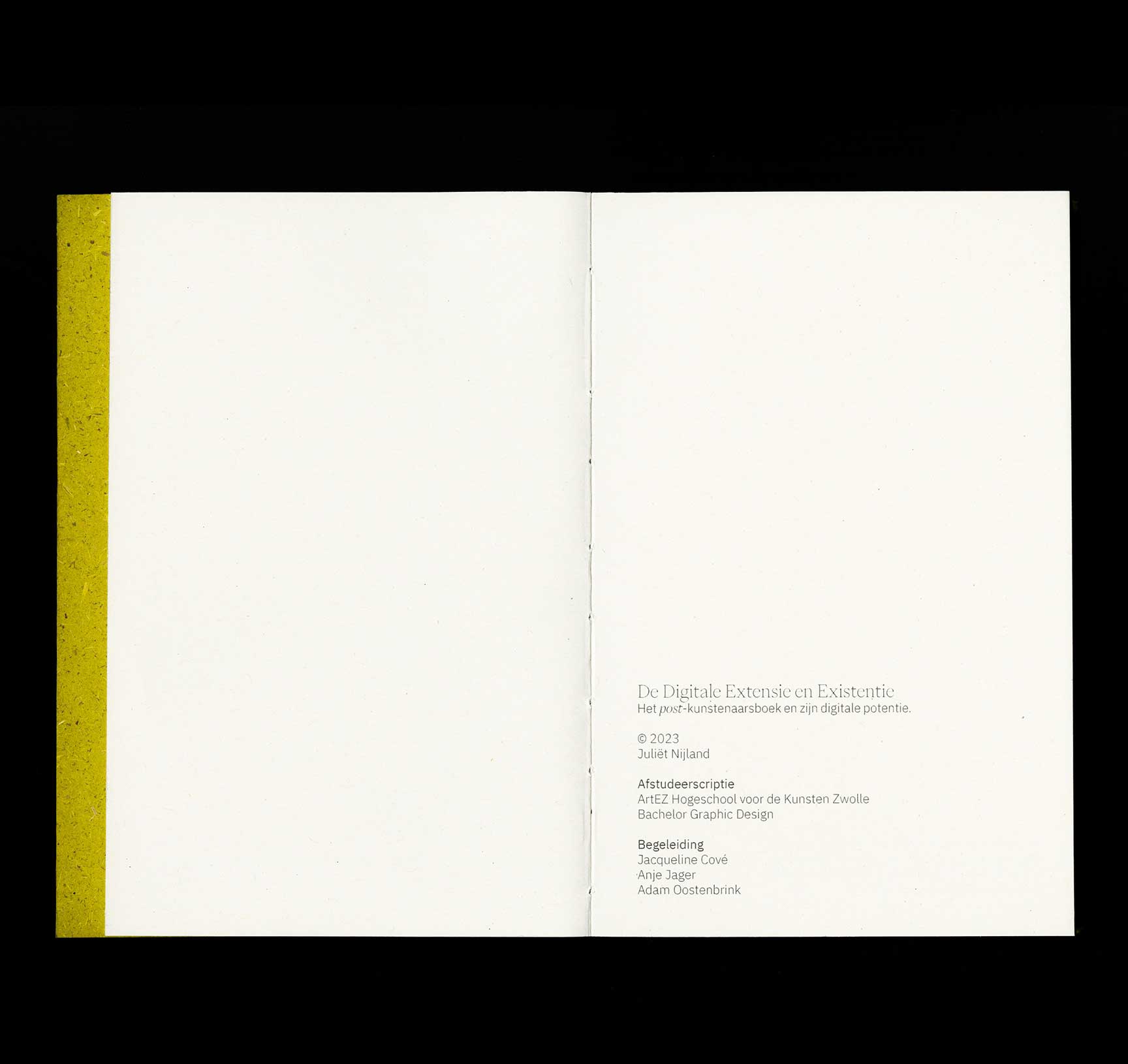
Juliët Nijland
The first part focuses on considering digital media as an extension of the book.
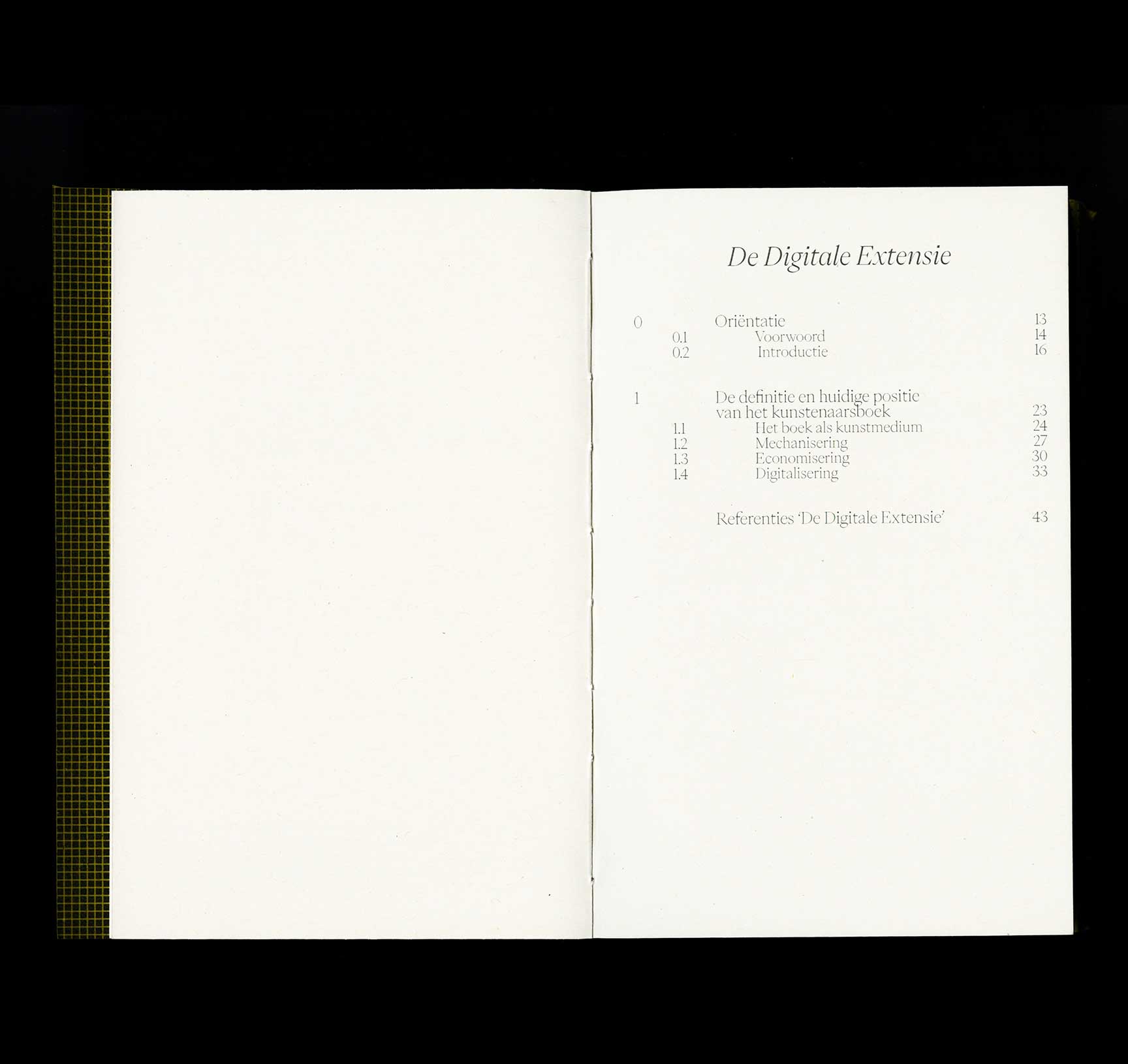
Juliët Nijland
"Dear reader. Don't read." is a work by Ulises Carrion. This ambiguous statement fitted within the research conducted in this book.
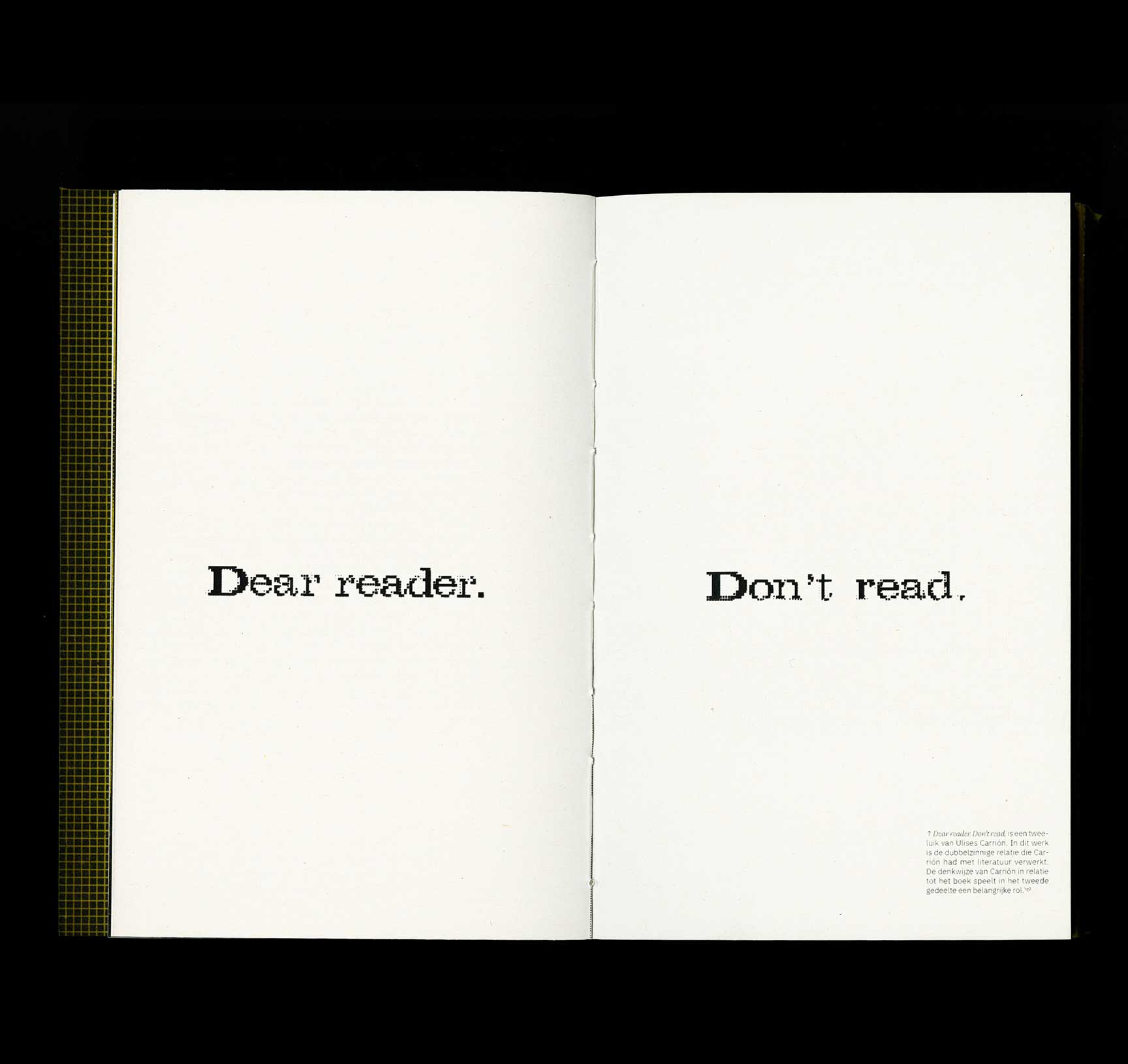
Juliët Nijland
The green pages between the chapters contain images of books I made while studying.
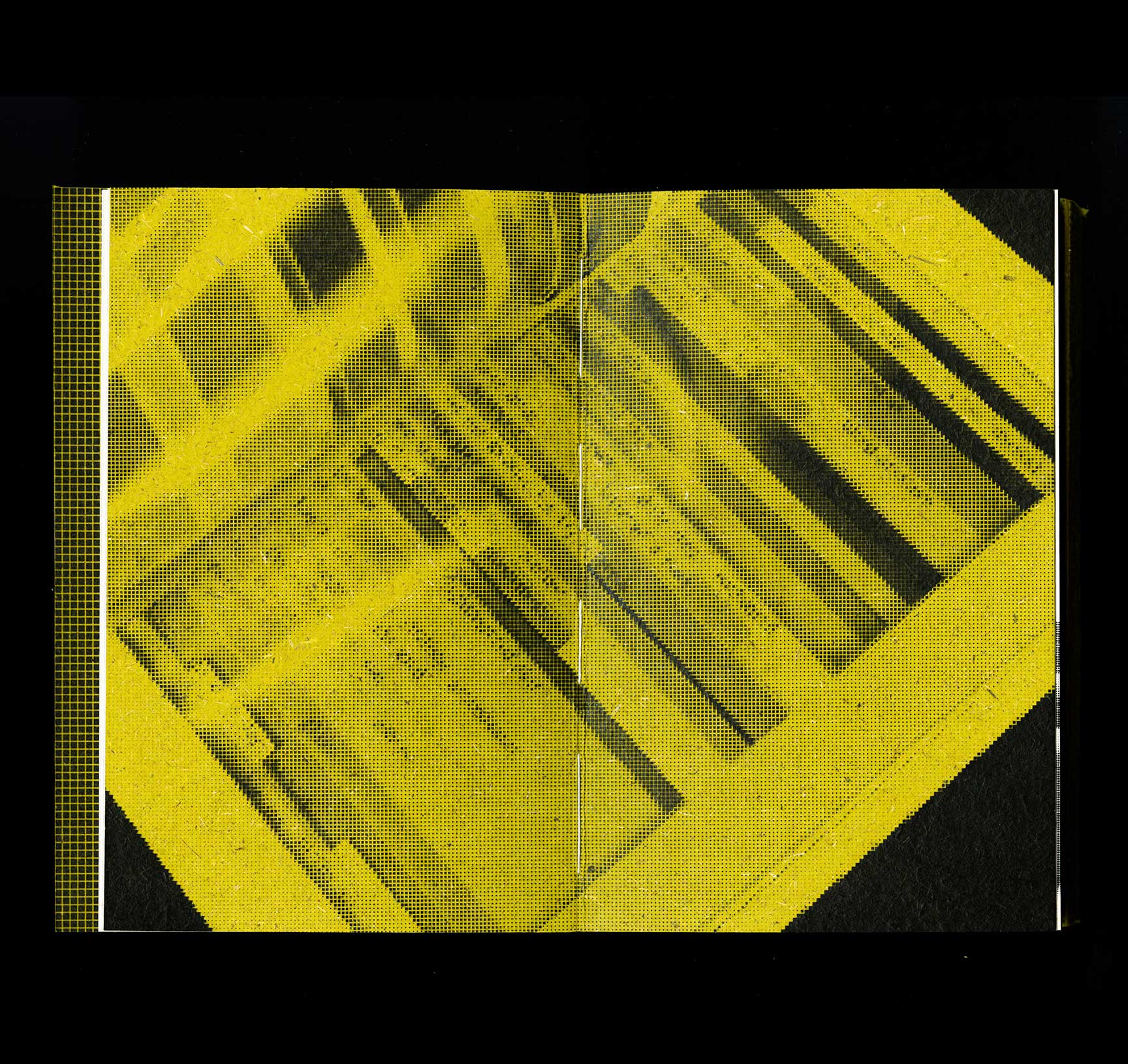
Juliët Nijland
All photos within the book have been rasterised through the use of Processing, composing them of square pixels.
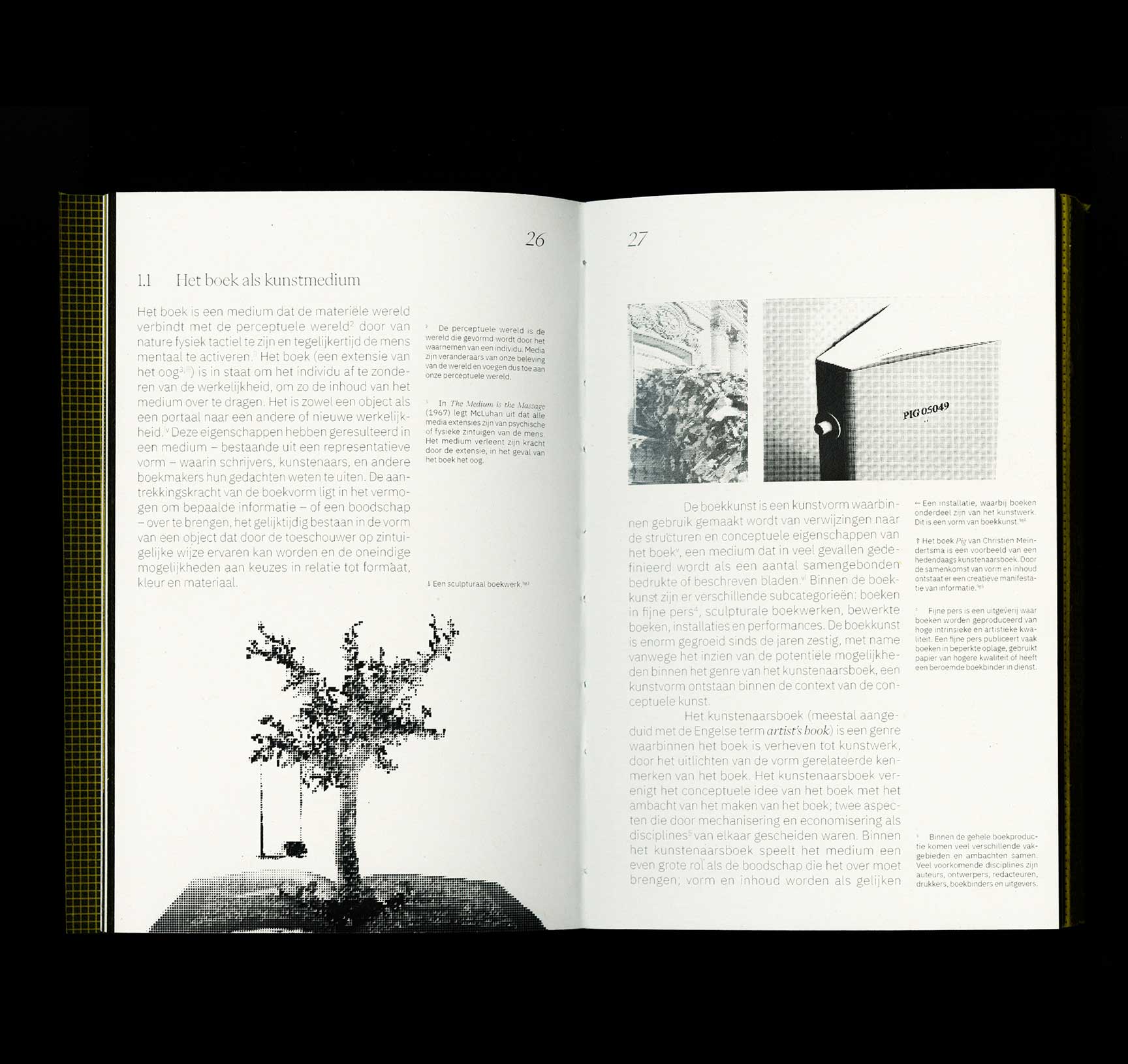
Juliët Nijland
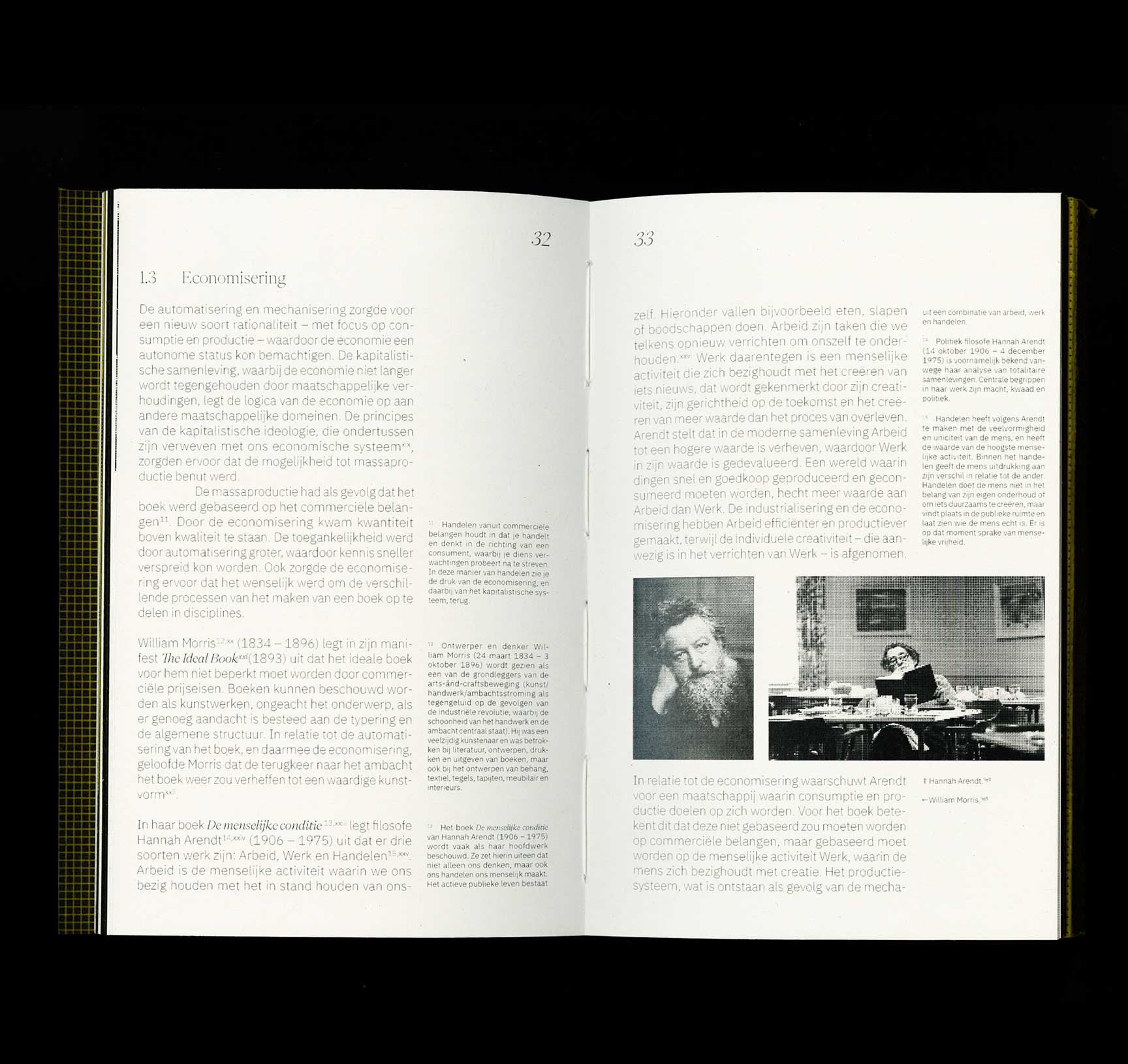
Juliët Nijland
The second part focuses on considering digital media as a new existence of the book. Hereby new forms of non-linearity, accessibility and interactivity come to life.

Juliët Nijland
In the second part, see-through pages were put in, with QR-codes to every project that got cited.
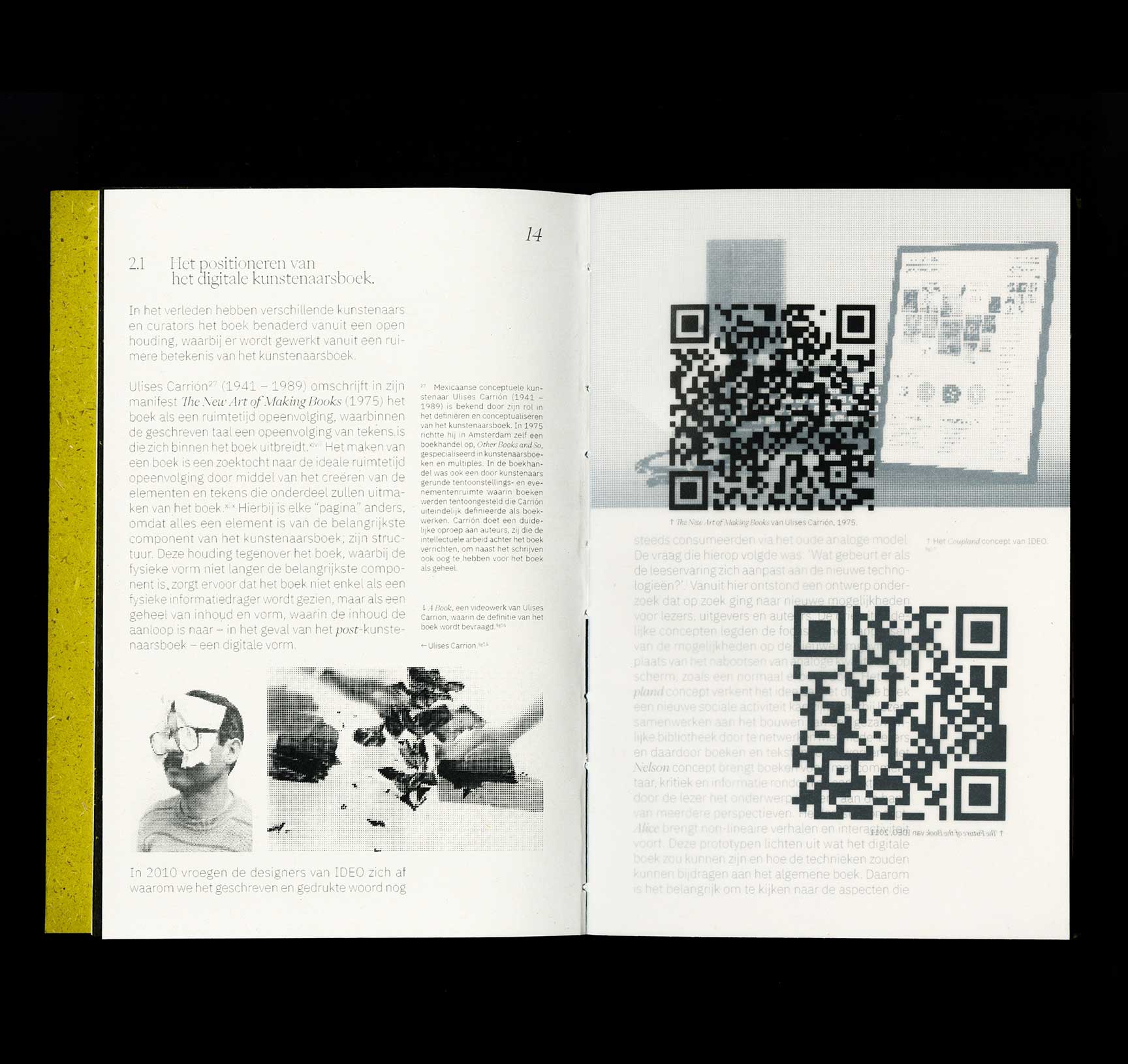
Juliët Nijland
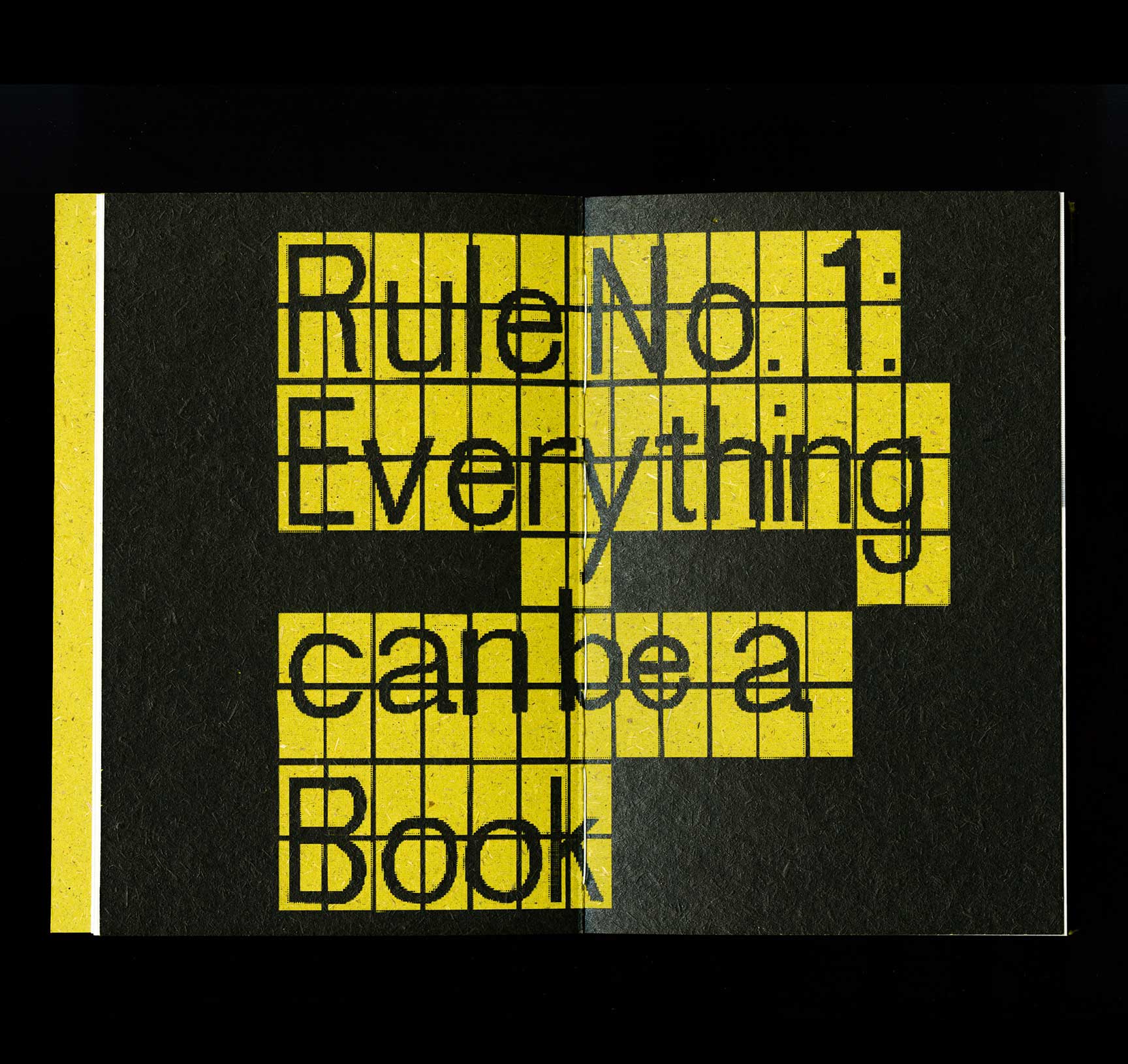
Juliët Nijland
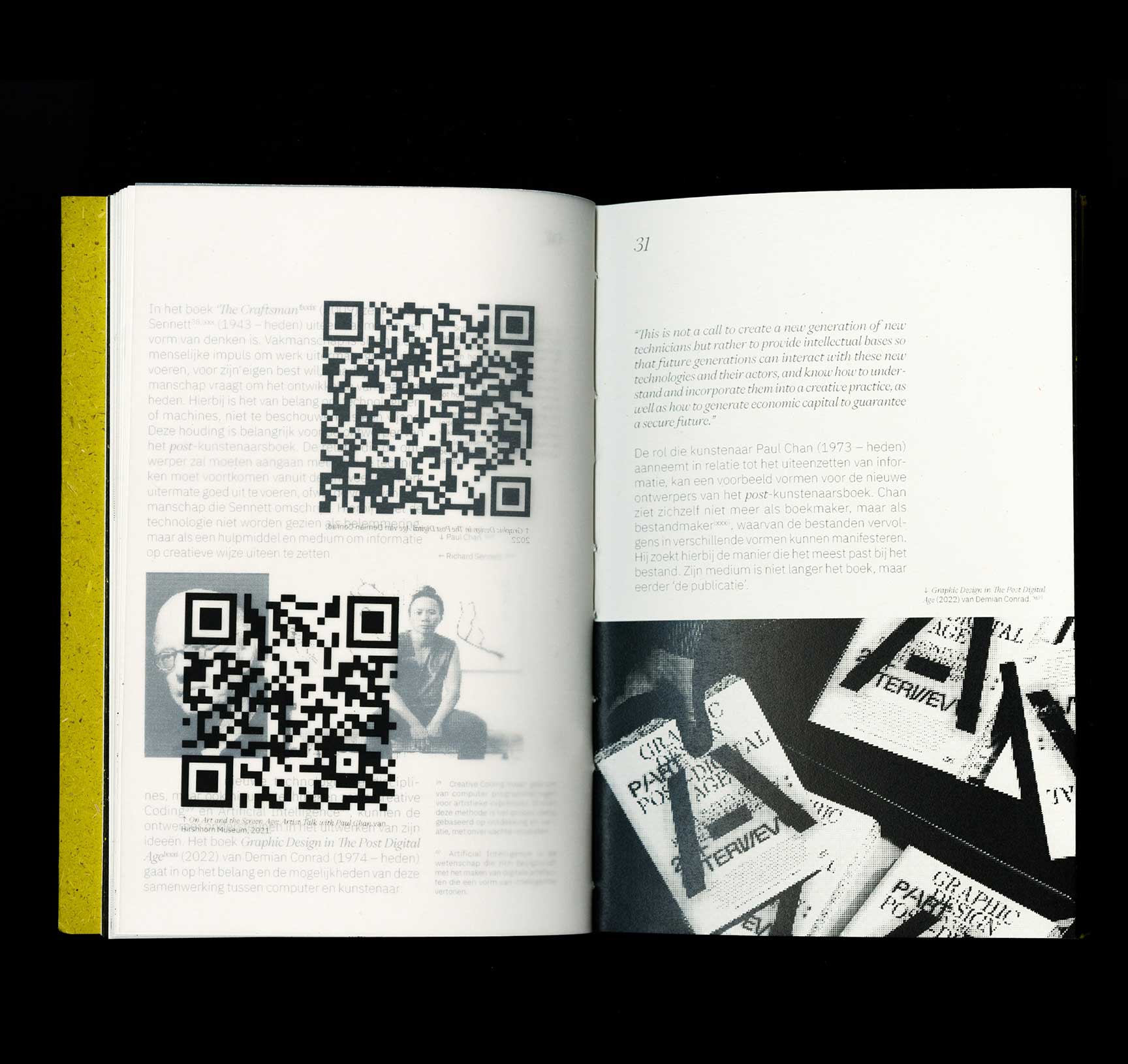
Juliët Nijland
In my personal reflection, I talked about the fact that it is a good thing to look beyond the old medium and see what lies ahead. Here I qouted John Maeda, a line I will always keep in mind while creating something new: "I have always believed that being curious is better than being afraid - for when we are curious, we get inventive, whereas when we are afraid, we get destructive."
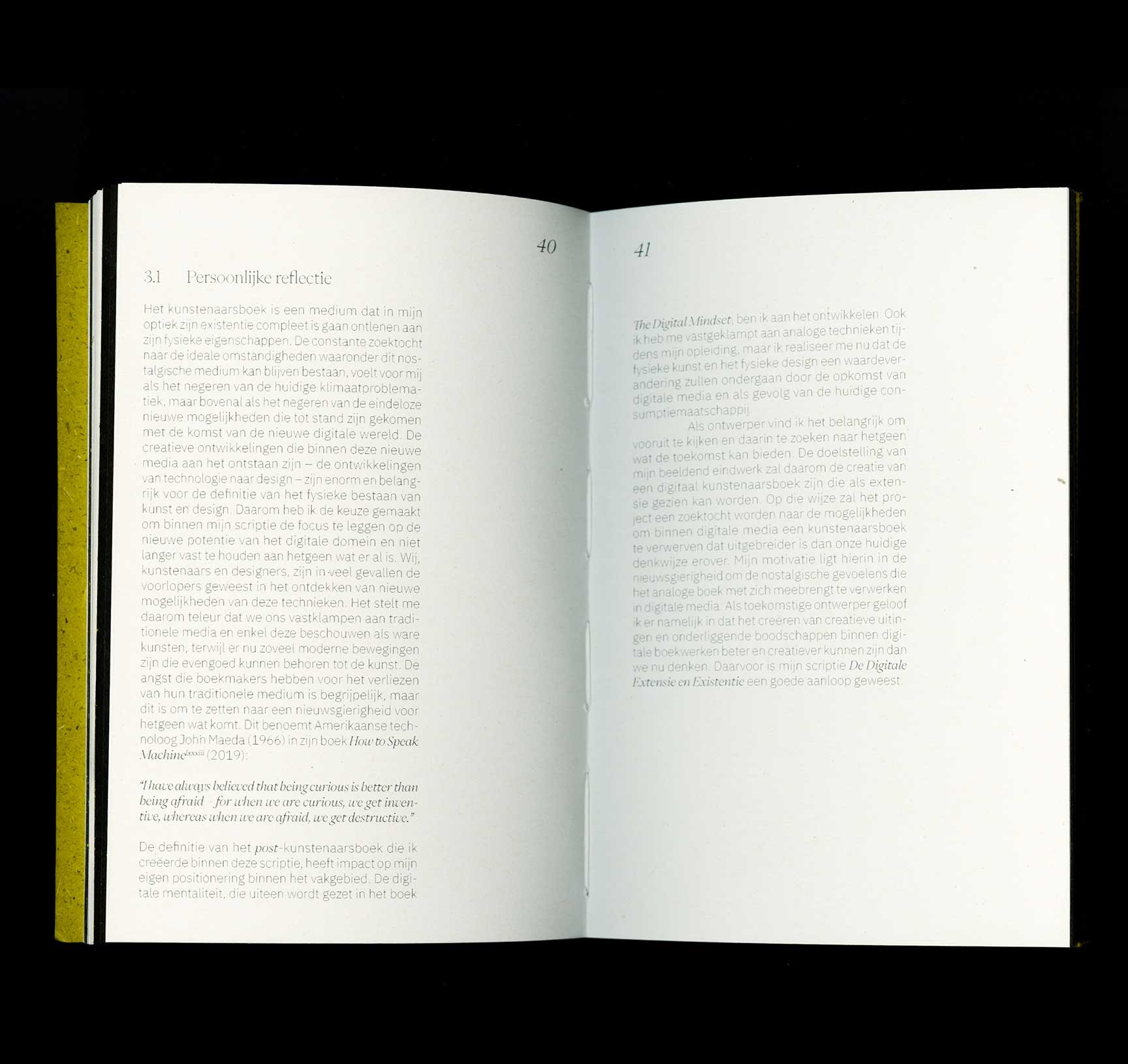
Juliët Nijland
